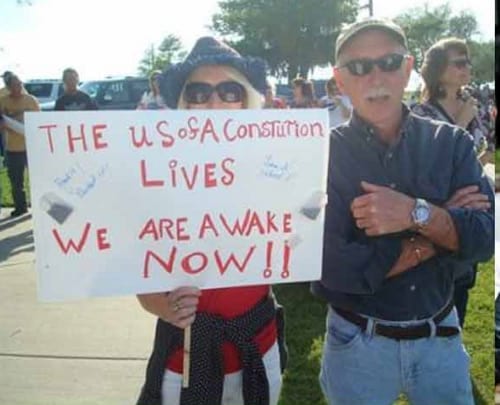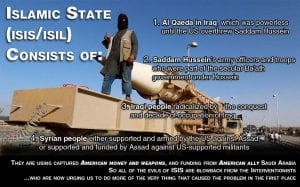
Updated Oct 10, 2023
Trump Signs Executive Order to Enhance Security
In a move that reverberated through the nation, former U.S. President Donald Trump made a resounding statement with his bold signature. “Trump signs executive order” became a phrase etched into the annals of American history as he unveiled two groundbreaking executive actions, meticulously crafted to bolster national security and safeguard the interests of the United States.
Imagine a moment when the world’s weight rested on the President’s shoulders, a pivotal crossroads in the tapestry of American governance. With the stroke of his pen, President Trump set in motion a seismic shift in U.S. policy. What exactly do these executive orders entail? Let’s delve into this riveting narrative to unravel the layers of significance they carry.
The executive order was, in essence, a declaration that sent shockwaves through the nation and resonated globally. The President’s signature was more than a mere formality; it was a statement of intent that triggered passionate conversations about the evolving character of the United States in an interconnected world. It posed profound questions about the values the nation held dear, and how they could be upheld while ensuring the security of its citizens. As we delve deeper into this topic, we will explore the motivations, implications, and the enduring impact of this executive order, delving into the intricate interplay of security, compassion, and America’s role on the world stage.
At the forefront is an executive action with far-reaching implications that took centre stage on the global platform. The executive order effectively slammed the door shut on Syrian refugees, banning their entry into the United States for an indefinite period. The ramifications of this decision, much like ripples in a pond, touched upon numerous aspects of American life, immigration policy, and international diplomacy. This sweeping move could potentially reshape the immigration landscape in the United States.
The palpable tension in the air was undeniable as the world watched with bated breath. What motivated this decision? Was it the pursuit of enhanced security, or did it reflect a broader ideological stance? These questions, among many others, quickly entered the public discourse, fueling debates, discussions, and an insatiable thirst for information.
Trump’s signature on these executive orders heralded a new chapter in national security. The executive action concerning Syrian refugees stood as a testament to the power and authority vested in the President, igniting discussions on executive privilege and its limits. Moreover, it spotlighted the complexity of the immigration debate, igniting passionate conversations from every corner of the nation.
The “Trump signs executive order” moment was more than just a simple signature; it was a watershed moment in the United States policy landscape. As we delve deeper into this topic, we will uncover the intricacies, motivations, and potential impact of these executive orders on U.S. security, urging us to contemplate the broader questions of security versus humanitarianism, the balance of power, and the ever-evolving role of the President in shaping the destiny of the nation.
In a decisive move, former U.S. President Donald Trump signed an executive order on a fateful Friday titled “Protecting the Nation from Foreign Terrorist Entry into the United States.” This order ushered in a new era in U.S. immigration policy, shaking the very foundations of how the nation approaches security in an ever-evolving world.
With its unwavering focus on national security, the executive order cast a wide net, suspending visas and other immigration benefits for citizens of “countries of particular concern.” The reasoning behind this order was clear and compelling, invoking the painful memory of the September 11, 2001, terrorist attacks that forever altered the landscape of New York and Washington, D.C. The attackers, 19 foreigners, had entered the United States with visas, a fact that served as a haunting reminder of the potential threats lurking within the immigration system.
Yet, the document did not merely rest on the foundation of a single tragic event; it went further to highlight terrorism-related crimes committed over the past 15 years. Foreign nationals, many of them arriving on short-term visas as visitors, students, temporary workers, or refugees seeking sanctuary, had been involved in acts that shook the nation’s sense of security.
This executive order was nothing short of a bold declaration, invoking both the past and the present to underscore the need for stricter immigration controls. The President’s signature was not merely an administrative act but a resounding message that reverberated across the nation, sparking discussions on the delicate balance between security and the values the United States holds dear. It called for a deeper exploration of the nation’s core principles, questioning how immigration policies could be tightened without compromising the essence of a land built on diversity and openness.
Trump Signs Executive Order to Suspend Admissions
In a defining moment in his presidency, former President Donald Trump wielded his executive authority to sign a far-reaching order on a pivotal Friday. This executive directive, “Protection Of The Nation From Foreign Terrorist Entry Into The United States,” marked a significant shift in U.S. immigration policy. It was a bold and unmistakable step towards tightening borders and instating a rigorous screening process, an approach President Trump famously termed “extreme vetting.”
The core of this executive order lay in the suspension of admissions for Syrian refugees, casting a shadow of uncertainty on those seeking sanctuary from a war-torn land. For an indefinite period, the suspension raised questions about the nation’s humanitarian responsibilities and obligations to global refugees. However, the executive order’s reach extended beyond Syria, with a broader implication of limiting the flow of refugees into the United States. This was a pivot from the previous U.S. policy of accepting refugees from various countries facing humanitarian crises.
President Trump’s signature on this executive order sent shockwaves through the nation and the international community, eliciting strong reactions from supporters and critics. Supporters viewed it as a necessary step to prioritize national security and protect American citizens from potential threats. They argued that enhanced vetting measures were imperative to ensure that individuals entering the country did not pose a risk to public safety.
Critics, on the other hand, voiced concerns about the humanitarian implications of the order. They argued that it undermined the United States’ long-standing tradition of providing refuge to those in need and sent a message of exclusion and discrimination. The order faced significant legal challenges, with courts issuing injunctions to halt its implementation and sparking a contentious legal battle over its constitutionality.
The executive order also had diplomatic ramifications, straining relations with countries affected by the ban and leading to widespread protests and demonstrations. It sparked debates on the role of the United States in global affairs, its responsibility to protect refugees, and the balance between national security and humanitarian concerns.
In conclusion, President Trump’s signing of the executive order to enhance security had a profound impact on U.S. immigration policy. It sparked a nationwide conversation on the delicate balance between security and humanitarianism. It remains a contentious issue, with ongoing debates surrounding its legality and the broader implications for U.S. values and international relations.
List of Trump’s Executive Orders: A Deep Dive
A remarkable era of executive orders marked President Donald Trump’s tenure, each stroke of the pen a testament to his vision and determination to fulfill the promises he made during his campaign. From the moment he took office, the list of these orders grew, reshaping the landscape of American governance.
In the initial whirlwind of his presidency, Trump wasted no time wielding his executive authority to enact swift change. His first three weeks in the Oval Office were a flurry of activity, as he signed a cascade of executive orders intent on reversing numerous policies by his predecessor, President Obama. These orders represented a marked shift in the nation’s direction, making it clear that the Trump administration was committed to a different course.
One of the defining aspects of Trump’s approach was his assertion that, within the first months of his presidency, he had achieved more than many of his predecessors. This bold claim, made in June during a meeting with his Cabinet, was emblematic of his results-oriented leadership style. It sparked intense discussions and debate about the impact and significance of the myriad executive orders that had been issued.
Understanding this executive order list is to delve into the heart of American governance in the 21st century. These orders touched on various issues, from immigration and national security to environmental regulations and healthcare policy. Some were celebrated by his supporters as necessary steps to unwind what they perceived as government overreach. In contrast, others generated passionate opposition from those who feared the erosion of critical policies.
The list of executive orders under President Trump was not just a collection of documents; it was a narrative of a nation in flux, reacting to the dynamic forces of change. It encapsulated the complex interplay of power, ideology, and governance, and it invited discussions on the very essence of American democracy. As we journey through this topic, we will explore the most notable of these executive orders, delving into their motivations, consequences, and the enduring impact they left on the United States.
In this discussion, it’s important to note that executive orders are a tool presidents use to manage operations within the federal government. The legal or constitutional authority for executive orders comes from Article Two, Section One of the Constitution, which vests the “executive power” in the president. While they bypass the U.S. Congress and the standard legislative law-making process, they are subject to judicial review and may be overturned if the orders are deemed unconstitutional.
In the case of President Trump, his use of executive orders was a significant aspect of his administration’s approach to governance, shaping policy across a range of issues and often sparking controversy and legal challenges. As we delve deeper into this topic, we’ll explore the impact of these orders and the debates they sparked, providing a comprehensive view of this vital aspect of the Trump presidency.
This content was originally published on April 20, 2017, but it has been continuously updated over the years, with the latest update conducted in October 2023.
Other articles of interest
EU stands to benefit by Granting China free market status
China cuts rates to boost green energy demand

China showcases its culture to the World
Remaking Moscow lures more Chinese investment
Chinese firms extend Moscow’s rail networks
Russians show patriotism on nuclear bunker tours
Moscow hi-tech parks seek lower production costs
Despite challenges & sanctions: Russian oil & gas remain profitable
Downed Su-24 shows U.S treachery
Global Warming Is Fake: Let’s See If This is True

Chinese flocking to U.S. Real Estate and German Migrant crisis

U.S. backed Coup in Ukraine, China wins, Russia resists



